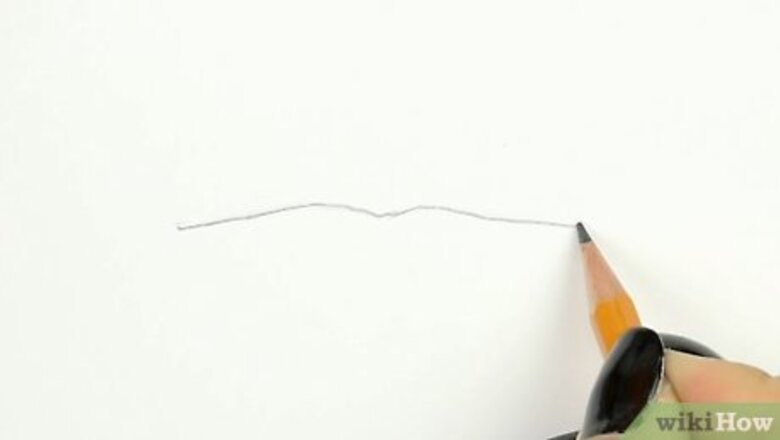
views
Drawing a Closed Mouth
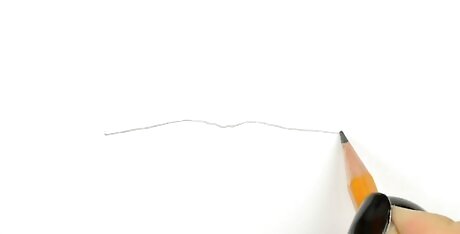
Draw the line where both lips meet. This is the line where the bottom of the upper lip meets the top of the lower lip. The shape of this line is a little different on everyone, and it depends on what facial expression is being made. Generally, for a resting facial expression, this line has a slight upward curve on each side and a dip in the middle. Make the dip about the same length as the upward curving lines on the ends. Make the length of this line as wide as you want the lips to be.
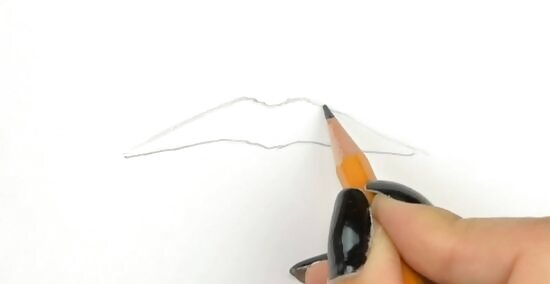
Outline the top of the upper lip. Start at the left end of the first line you drew, then draw a line at an upward angle, about 10-20°, to the right. Stop when you’re above a little less than the halfway point on the first line you drew. Repeat on the right end of the first line you drew, this time drawing the angled line to the left. Finally, draw a shallow “U” shape between the ends of the angled lines. This will be the dip in the top of the upper lip.Tip: Everyone’s lips are different. This is a good place to start when you’re learning, but you can always adjust the upper lip as needed. The dip could be wider or narrower, and the angled lines could curve up or down. If you’re drawing from a reference photo or model, use this as a guide, but try to capture the unique shape of their upper lip.
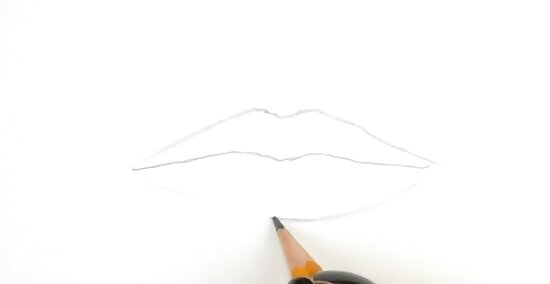
Sketch the bottom of the lower lip. Start at one end of the line where both lips meet. Then, draw a shallow “U” shaped line that stops at the other end of the line you started at. Generally, the lower lip is bigger than the upper lip (about 1 ½ times bigger). You can make the lower lip even bigger, or have it be the same size as the upper lip. To make the bottom lip bigger, make the “U” shaped line deeper. To make it smaller, make the “U” shaped line shallower.
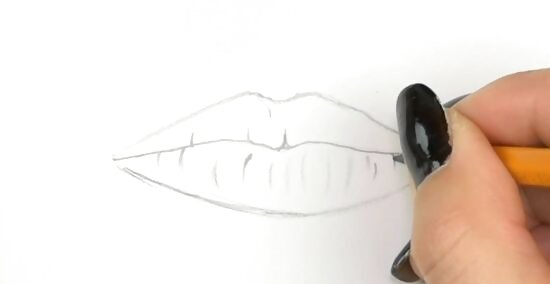
Add in the vertical creases on the lips. If you look at someone’s lips, you’ll notice they’re not perfectly smooth. Lips have fine, vertical creases in them, which get more pronounced as people age. These lines will be more noticeable in the lower lip, so start there. Draw a series of around 10 lines that span across the lower lip. Repeat on the top lip, but draw fewer lines and make them shorter since they’re usually less noticeable there. Vary the length of each line, and curve them slightly so the lines on the left half of the lips curve out to the left and the lines on the right half curve out to the right. Make the lines near the center of the lips relatively straight.
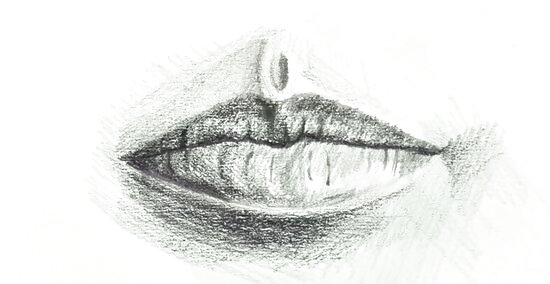
Shade in the lips to add dimension. The right way to shade the lips will depend on the lighting. If the lighting is above the face, the shadows would fall at the bottom of each lip, so shade those areas the darkest. If the light is coming from the side of the face, one half of the lips would be darker (the half that’s opposite the lighting) than the other half. For straight-on lighting, there wouldn’t be very many shadows. In that case, the darkest part of the lips would be where the upper and lower lips meet. Generally, the brightest areas will be the portions of the lips that stick out the most, like the middle of the lower lip and the top of the upper lip. Leave these areas white. Shading will add highlights and shadows to the lips, making them look more realistic.
Sketching an Open Mouth with Teeth
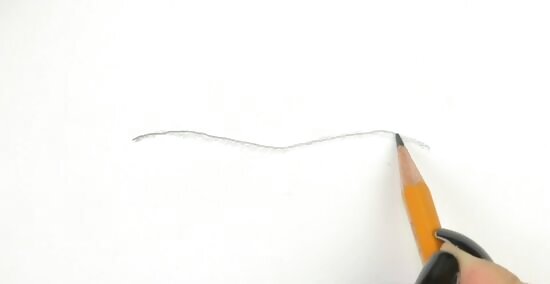
Draw an outline of the mouth. Start by drawing a horizontal line with a shallow upward curve. Make this line as long as you want the width of the mouth to be. This will be the bottom of the upper lip. Next, starting at one end of that line, draw a “U” shaped line that ends at the opposite end you started at. Make the “U” shaped line deep enough that you’ll be able to draw the teeth inside the mouth. Make the distance between the lowest point on the “U” shaped line and the center of the curved horizontal line about ⅓ the length of the curved horizontal line. At this point, the mouth will have a banana-like shape.
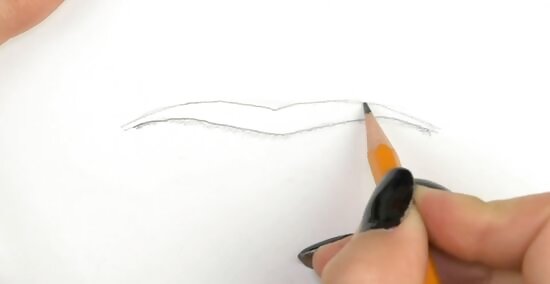
Sketch the top of the upper lip. Start at one end of the curved horizontal line, and draw a shallow downward-curving line that ends slightly above the halfway point on the curved horizontal line. Then, repeat on the other side so the 2 downward-curving lines meet in the middle. Make the distance between that point and the halfway point on the curved horizontal line about ⅓ the height of the mouth.
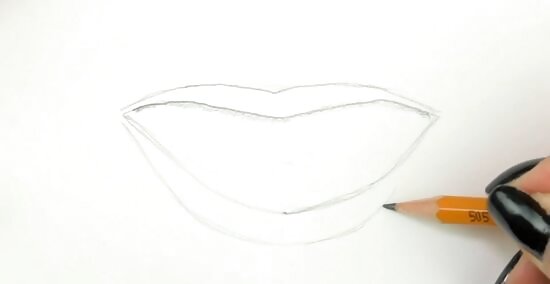
Outline the bottom of the lower lip. Start at one end of the curved horizontal line, and draw a “U” shaped line that ends on the opposite end. Leave a gap between this line and the first “U” shaped line you drew for the mouth. Make the gap progressively bigger the further away you get from the starting point. When you’re halfway to the other side, make the gap progressively smaller until you reach the other end. Make the distance between the lowest point on this line and the lowest point on the first “U” shaped line you drew about ½ the height of the mouth.
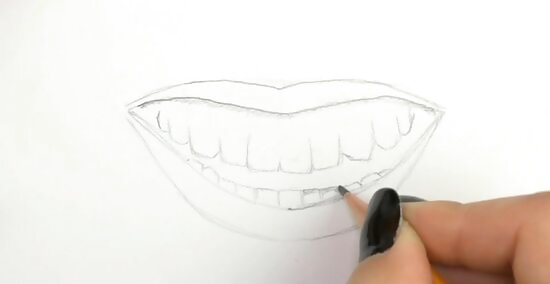
Draw partial rectangles across the length of the mouth for the teeth. Start by drawing a partial rectangle in one corner of the mouth. Don’t draw the top of the rectangle since that’s where the gums will go. Round out the bottom two corners of the rectangle, and angle the bottom edge so it’s parallel with the top of the lower lip. Draw another partial rectangle directly next to it, but make this one slightly taller. Repeat this process until you’re done drawing the first front tooth. Now, do the same thing on the other half of the mouth. Draw the same number of teeth on each half, about 5-6.
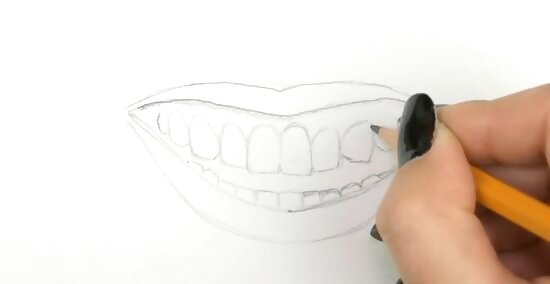
Draw an arc above each tooth for the gums. Start with the tooth at one end of the mouth, and draw a shallow arc over it. Have the peak of the arc line up with the bottom of the upper lip. Repeat for the rest of the teeth.
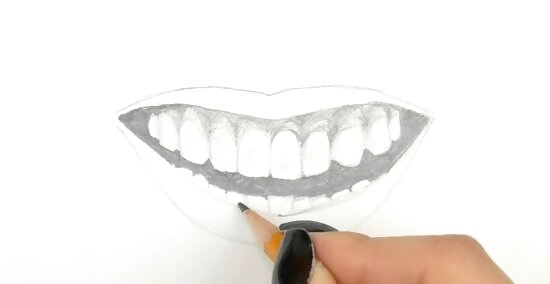
Shade in the gums and mouth. Shading will give your drawing dimension and make it look more real. Use a pencil to shade in the inner portion of the mouth, or the blank space under the teeth and above the lower lip, as dark as you can. Then, fill in the gums a few shades lighter than that.Tip: Use the edge of your pencil tip to shade since it will be easier to blend.
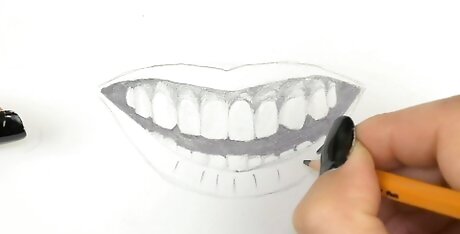
Add creases to the lips. To add creases the lips, which will make them look more realistic, draw a series of curved vertical lines across the length of each lip. Vary the lengths of the lines, and have some start at the top of each lip and some start at the bottom. Make the lines on the left half of the lips curve out to the left, and make the lines on the right half of the lips curve out to the right. Make about 10 creases on each lip.
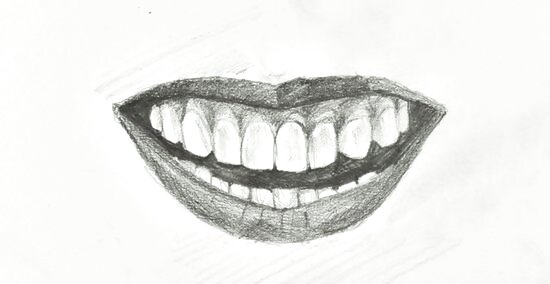
Shade in the lips to finish your drawing. Light casts shadows and highlights on the lips, and you can capture these different shadows and highlights using shading. Shade in the ends of the lips at the corners of the mouth, the bottom of the top lip, and the top and bottom of the lower lip. Make this shade darker than the gums but lighter than the inner mouth. Leave the top of the upper lip and the middle of the lower lip white or just slightly shaded since those areas will have the most highlights. To improve your artistic skills read about drawing. Make a lot of sketches. Learn to observe things from and artistic perspective with the help of a good teacher.











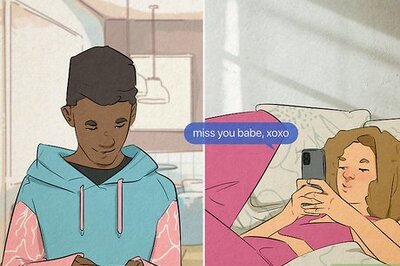






Comments
0 comment